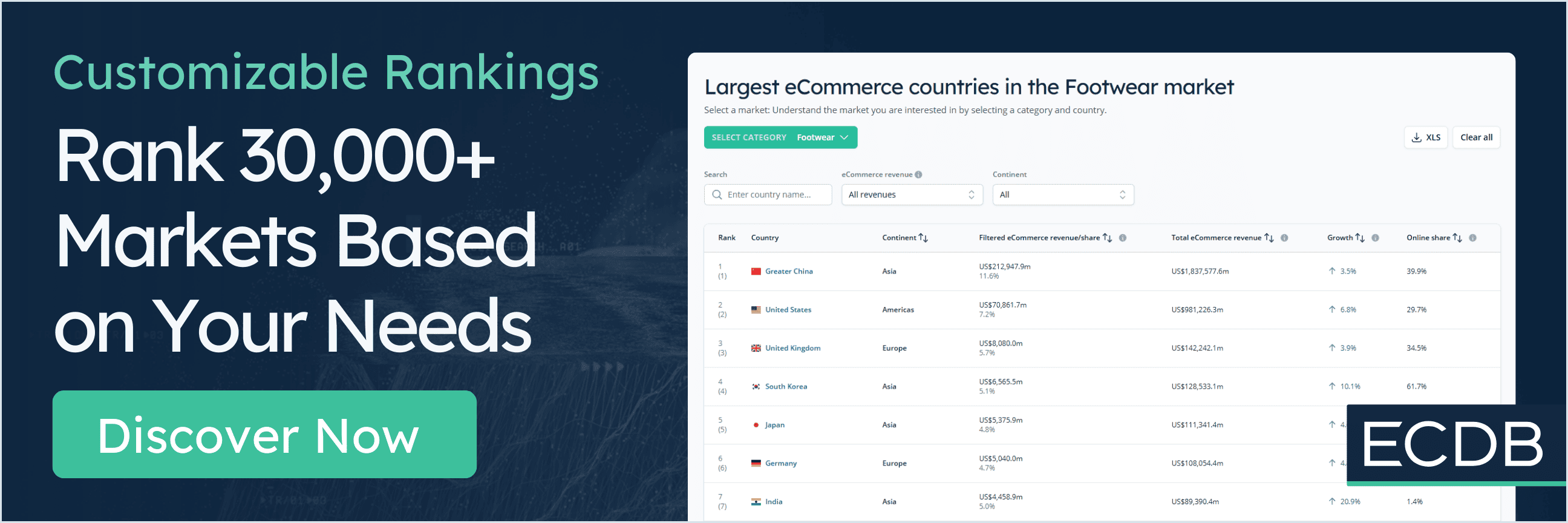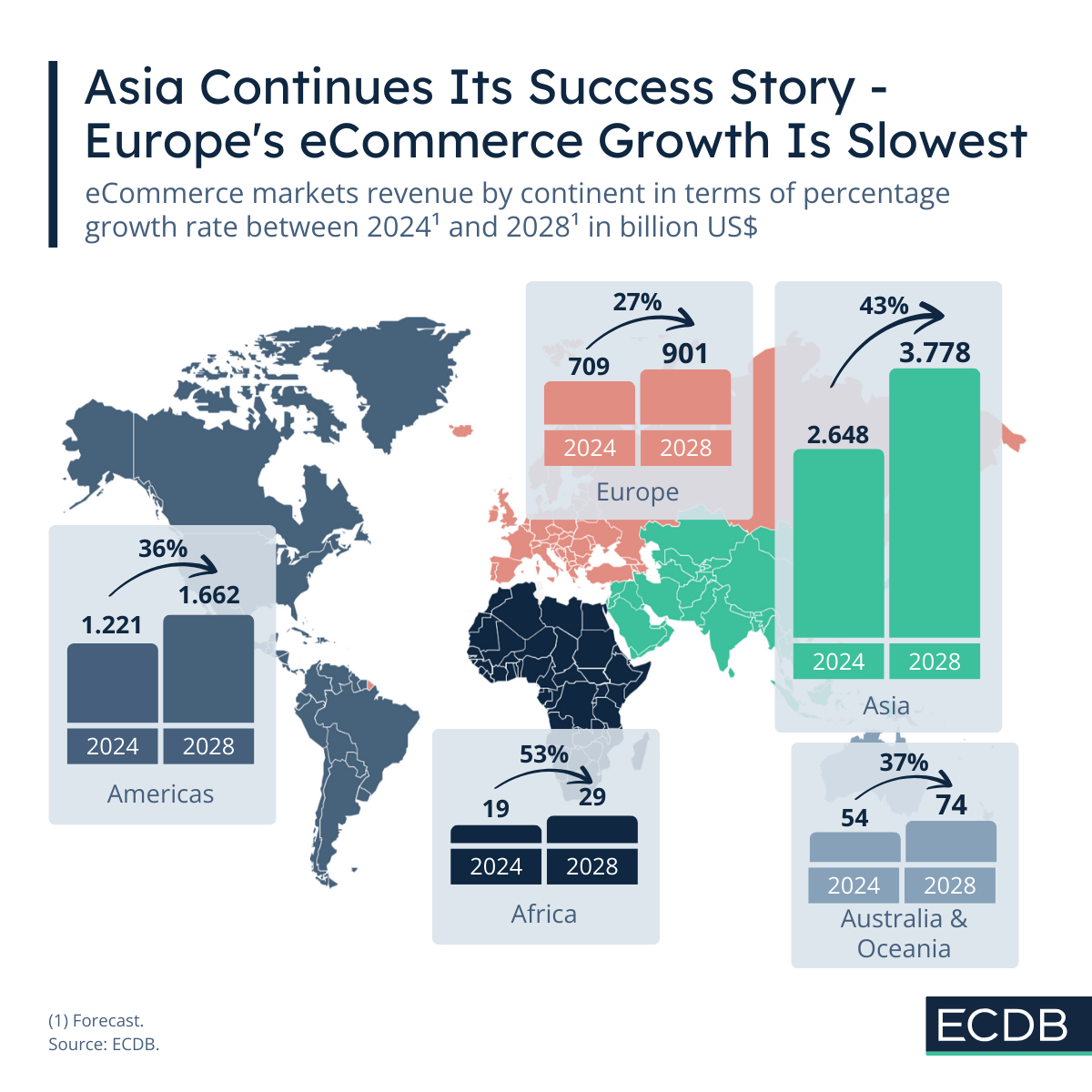New year, new possibilities. The year 2025 has only just begun, but already it is possible to make an initial assessment of how eCommerce could develop in the future. From a global perspective, one continent stands out: Asia, home to the world's largest eCommerce country, China.
Asian eCommerce Continues to Soar Thanks to Populous and Innovative Markets
In 2024, the Asian market generated a total of US$2.6 trillion in eCommerce revenues, representing more than half – 56.9% to be precise – of the total global eCommerce revenues. By 2028, the market is forecast to grow at a CAGR of 42.7% to reach US$3.8 trillion. The main driver of this development is China, with revenues of US$2 trillion in 2024.
The country is the most important hub for the continent, not only because it generates the most revenue, but also because its innovations in eCommerce have a tremendous impact on neighboring countries. Chinese companies such as Alibaba Group Holding, Ltd., ByteDance, Ltd., and JD.com, Inc., which are expanding into other Asian countries with lower online shares, are pushing the eCommerce markets of those countries, which in turn leads to more eCommerce growth on the continent.
But Asia is more than just China, it is also home to important eCommerce countries such as Indonesia, India, South Korea and Japan, all among the top 10 eCommerce countries in the world. India in particular has a big advantage: although its online share is only 3.6%, it is the seventh largest eCommerce market in the world. The reason for this is the fact that India, with its 1.44 billion inhabitants, recently surpassed the most populous country in the world, China (1.42 billion).
Africa as the Fastest Growing eCommerce Market in the World
With a projected growth rate of 52.6% between 2024 and 2028, Africa is the fastest growing market in the world, at least on a percentage basis. In terms of absolute revenue, the picture is somewhat different. In 2024, the continent generated eCommerce revenues of US$19 billion, which is forecast to hit US$29 billion by 2028 – a difference of US$10 billion.
Africa is a huge continent in terms of population, territory and natural resources, but also in terms of eCommerce potential. This is reflected in the online shares of individual African countries: Niger is the lowest at 0.7%, while South Africa is the highest at 6.8%. This low digital infrastructure, combined with a lower starting point than other continents, positions Africa as an eCommerce market with much potential for investment.
eCommerce Markets in Europe Struggle, Resulting in Slowest CAGR in the World
Meanwhile, Europe follows a weaker trend, with a projected CAGR of 27.1% between 2024 and 2028. While countries in the South (e.g. Spain & Portugal) and East (e.g. Georgia & Bulgaria) are experiencing strong growth due to low online penetration, Central Europe is struggling. In particular, more mature eCommerce markets such as Germany and France grow slower.
There are a number of factors at play, most notably the fact that these markets are more mature and hence at a different stage of development. In addition, the continent is made up of many small countries with a combined population half that of India (745 million in 2024). This means that these countries are reaching a more mature market stage much faster than countries like India and China. Thus, in order to compete with these larger eCommerce markets in the future, it is important to work beyond domestic eCommerce.










